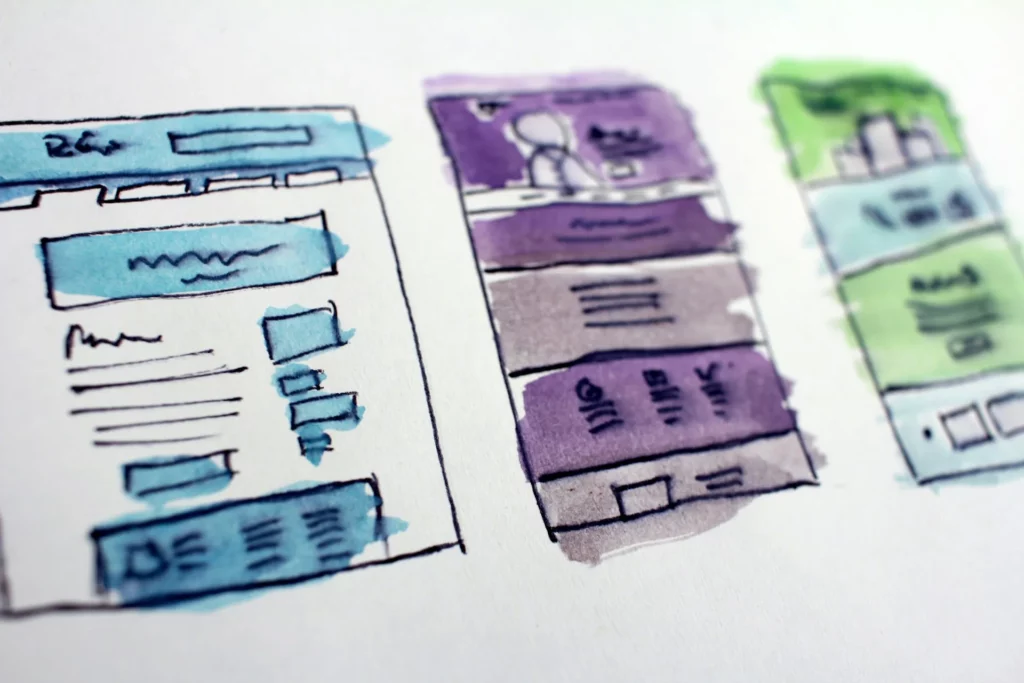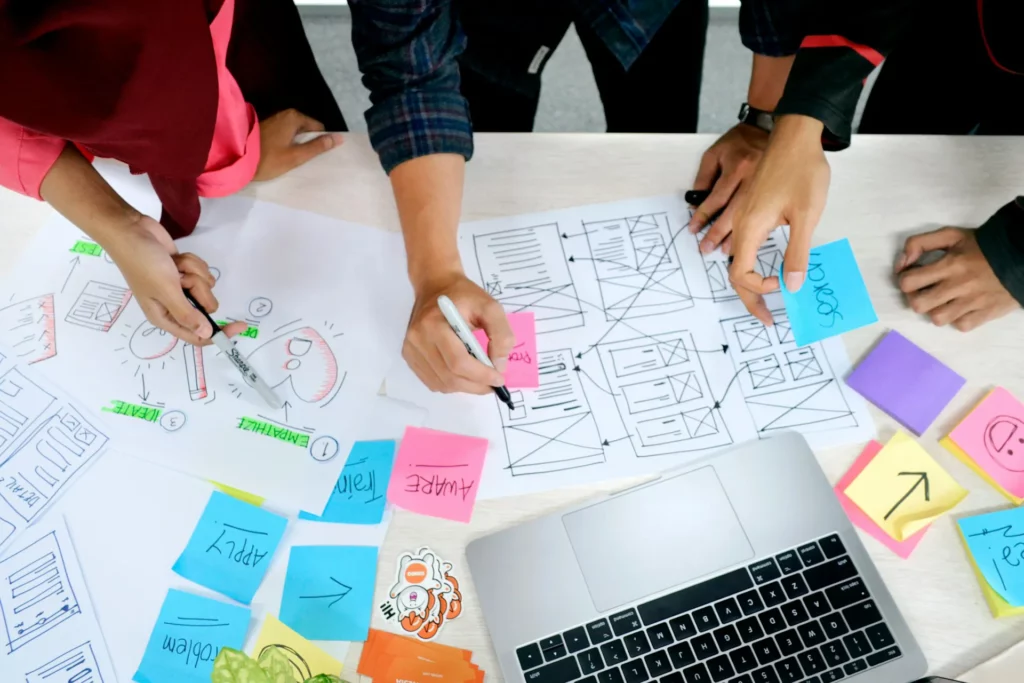It’s no mystery that having a mobile app for your business is no longer considered a luxury, but a necessity. With the majority of consumers accessing the web through their mobile devices, having a mobile app can significantly improve your reach and engagement with customers.
However, we know this is easier said than done. The process of developing a mobile app can seem daunting, especially for those who are green in the world of app development or technology in general.
So, we’re going to break down the mobile app development process for you and provide some tips for success. Ready? Let’s go.
Understanding the Mobile App Development Process
The mobile app development process can be divided into six main stages: ideation, research, design, development, testing, and launch. Let’s take a closer look at each stage.
Ideation

The first stage of the mobile app development process is ideation. This is where you come up with that ingenious idea for an app. During this stage, you want to have a clear understanding of what you want your app to achieve and who your target audience is. This is why it’s imperative to research the market and see if there are any similar apps already out there. This will help you determine if your idea is unique and if there is a demand for it.
Research
Once you have a solid idea for your app (and you’ve determined there is a need for it), it’s time to conduct your research. This will involve market research, competitor analysis, and consumer research. This will help you understand and connect with your target audience, get to know their needs and preferences, and give you insight into what your competitors are doing (never lose sight of this!).
Product Strategy
With the information garnered during your research, you can now move into fine-tuning the ideation of your product and set it up for project success. This is where you’ll write, and iron out the vision and requirements you have for your product, the strategy you’ll utilize to get it developed and into the hands of your customers, and the roadmap you’ll take to get your product from ideation to fruition.
Design

The design stage is where you bring your app to life. And it’s important to know that design doesn’t mean visuals only. The architecture of your app and the experience you provide your customers is just as, if not more important, than giving them something pretty to look at (it’s not just about looks, shallow Hal). This involves creating wireframes and mockups to visualize the layout, functionality, and experience of your app. Again, the focus is on both user experience (UX) and user interface (UI) design. Taking the time to understand the experience you want to provide your audience (UX) and how polished you want to make that experience goes a long way. If you get this secret sauce tasting just right, you can gain your customer’s loyalty and have a long-lasting relationship with them.
Development
Once the design is finalized, it’s time to bring in the experts to start developing your app. This stage involves coding and programming to turn your app into a real boy (or girl!). It’s important to have a skilled and experienced development team. A good team consists of, an architectural engineer, a software engineer, a developer, and a product manager and project manager to ensure your app is built to the highest standards of quality. Working with a highly professional team like this requires constant communication and a supportive and positive working relationship. Things can move and change within minutes, even seconds, and there are a plethora of moving parts – so having an onshore team that can move and shake with you is incredibly invaluable.
Testing

Before debuting your new app, it’s crucial to thoroughly test it – this involves manual and automated testing to ensure your app is working as intended. You’ll want to test it for bugs, glitches, and malfunctions, and confirm the design is what you signed off on. Thorough testing will allow you to fix any issues prior to launching your app. Don’t downplay the importance of this step, testing and fixing issues before making your debut will reduce the amount of negative reviews and dissatisfaction your audience may experience with your app. You only get 1 chance to make a good first impression.
Launch
The final stage of the mobile app development process is the launch. This is where your app is made available to the public through app stores like the Apple App Store and Google Play Store. It’s important to have a solid marketing plan in place to promote your app and reach your target audience.
Tips for Success in Mobile App Development
Now that you understand the mobile app development process, here are some tips to help you succeed in creating a successful app.
Have a Clear Vision
Before starting the development process, it’s important to have a clear vision for your app. This includes understanding your target audience, their needs and preferences, and what you want your app to achieve. Having a clear vision will help guide the development process and ensure your app meets its goals.
Focus on User Experience

User experience (UX) is crucial in the success of a mobile app. Your app should be easy to use, visually appealing, and provide a seamless experience for users. This will help increase user engagement and retention.
Utilize Agile Methodology
Agile methodology is a project management approach that involves breaking down the development process into smaller, more manageable tasks. This allows for more flexibility and adaptability in the development process, making it easier to make changes and improvements along the way and thus minimizing risk.
Test, Test, Test
As mentioned earlier, testing is a crucial stage in the mobile app development process. It’s important to thoroughly test your app for any bugs or glitches before launching. This will help ensure a smooth user experience and avoid negative reviews.
Have a Marketing Plan in Place

Having a solid marketing plan in place is crucial for the success of your app. This includes promoting your app through various channels, such as social media, email marketing, and influencer partnerships. It’s important to create buzz and generate interest in your app before and after its launch.
Real-World Examples of Successful Mobile Apps
Let’s take a look at some real-world examples of successful mobile apps and what made them stand out.
TikTok
TikTok is a video-sharing app that has taken the world by storm. It allows users to create short, entertaining videos and share them with their followers. What sets TikTok apart is its algorithm, which uses artificial intelligence to curate a personalized feed for each user based on their interests and viewing history.
Headspace
Headspace is a meditation and mindfulness app that has gained popularity in recent years. It offers guided meditations, sleep sounds, and other tools to help users improve their mental well-being. What makes Headspace stand out is its simple and user-friendly interface, making it easy for anyone to start their meditation journey.
Conclusion
The mobile app development process can seem overwhelming, but by understanding the stages and following these tips, you can create a successful app that meets the needs of your target audience. Remember to have a clear vision, focus on user experience, and thoroughly test your app before launching. With the right approach, your app can become a valuable asset for your business.




